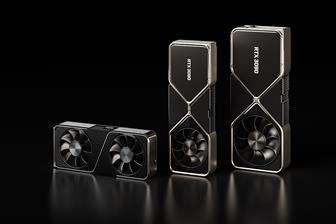
Hewlett Packard (HP) and the Flexible Display Center (FDC) at Arizona State University (ASU) have announced the prototype of flexible electronic displays.
The unbreakable displays were created by the FDC and HP using self-aligned imprint lithography (SAIL) technology. SAIL is considered "self aligned" because the patterning information is imprinted on the substrate in such a way that perfect alignment is maintained regardless of process-induced distortion. SAIL technology enables the fabrication of TFT arrays on a flexible plastic material in a low-cost, roll-to-roll manufacturing process. This allows for more cost-effective continuous production, rather than batch sheet-to-sheet production.
Flexible displays are made almost entirely of plastic. The production of the displays used up to 90% less materials by volume compared to normal display production process.

Samsung HKMG DDR5
Samsung Electronics has expanded its DDR5 DRAM memory portfolio with a 512GB DDR5 module...
Photo: Company

Nvidia GeForce RTX 30 series GPUs
Nvidia's GeForce RTX 30 series GPUs are powered by the company's Ampere architecture. The...
Photo: Company

Apple HomePod mini
Apple's HomePod mini is the newest addition to the HomePod family. At just 3.3 inches tall,...
Photo: Company

Apple 13-inch MacBook Pro with Magic Keyboard
Apple has updated the 13-inch MacBook Pro with the new Magic Keyboard for an improved typing...
Photo: Company

Apple iPad Pros
Apple's new iPad Pros comes with the latest A12Z Bionic chip, an ultra-wide camera, studio-quality...
Photo: Company
- Musk says chip capacity will decide winner of AI race (Mar 21) - EE Times
- Google taps MediaTek for cheaper AI chips (Mar 17) - The Information
- European project gets $260 million for HPC chip sovereignty (Mar 6) - EE Times
- The trouble with MAGA's chipmaking dreams (Mar 3) - Economist
- Automotive chips: Gloom and doom or boom by 2030? (Feb 14) - EE Times
- Deepseek is more Wall Street than Silicon Valley (Feb 3) - Culpium, by Tim Culpan
- Tech CEOs try to reassure Wall Street after DeepSeek shock (Jan 30) - Wall Street Journal
- TSMC to make chips for cryptominer Bitdeer at new US fab (Jan 17) - Culpium, by Tim Culpan
![]() Etron's Nicky Lu on TSMC's global playbook and Taiwan's AI-memory pivot: no bottlenecks, no backpedaling
Etron's Nicky Lu on TSMC's global playbook and Taiwan's AI-memory pivot: no bottlenecks, no backpedalingGenerative AI is redrawing the tech landscape—from...
![]() Huawei
HuaweiChina-based Huawei's worldwide reach

Global server supply chain status and analysis, 2023-2025
DIGITIMES conducted a thorough investigation of major Taiwanese and Chinese EMS providers' production sites, analyzing over...

AI server BBU and Taiwan players, 2025
Taiwan-based power supply giants will benefit from rising demand for AI servers as the application's adoption of BBUs is set...

Tesla AI development in EVs and robots
Tesla leads the trend of automakers deploying humanoid robots, with reducing labor workforce as the initial goal.






